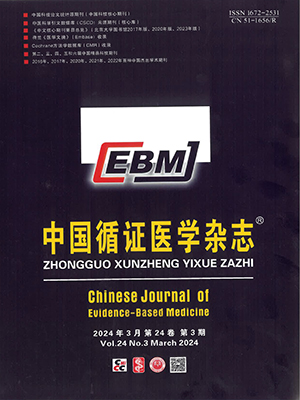| 1. |
Torzilli G, Makuuchi M, Inoue K, et al. No-mortality liver resection for hepatocellular carcinoma in cirrhotic and noncirrhotic patients: is there a way. A prospective analysis of our approach. Arch Surg, 1999, 134(9): 984-992.
|
| 2. |
Barnard J, Millner R. A review of topical hemostatic agents for use in cardiac surgery. Ann Thorac Surg, 2009, 88(4): 1377-1383.
|
| 3. |
国家食品药品监督管理总局. 关于发布可吸收止血产品等3个医疗器械注册技术审查指导原则的通告(2016年第7号).
|
| 4. |
姚金芳, 张雷. 止血防粘连耗材的管控. 中国医疗设备, 2016, 31(6): 129-131.
|
| 5. |
国务院办公厅. 关于印发治理高值医用耗材改革方案的通知. 2019.
|
| 6. |
武侠. 新医改环境下医院耗材管理的探索. 中国医疗器械信息, 2017, 23(23): 141-142, 147.
|
| 7. |
冯靖祎, 黄进, 吴航. 医疗机构止血材料管理专家共识. 中国医院建筑与装备, 2021, 22(7): 19-28.
|
| 8. |
Zhang Y, Song D, Huang H, et al. Minimally invasive hemostatic materials: tackling a dilemma of fluidity and adhesion by photopolymerization in situ. Sci Rep, 2017, 7(1): 15250.
|
| 9. |
Li S, Zhou K, Che G, et al. Enhanced recovery programs in lung cancer surgery: systematic review and meta-analysis of randomized controlled trials. Cancer Manag Res, 2017, 9: 657-670.
|
| 10. |
俞文峰, 徐金明, 盛宏旭, 等. 可吸收再生氧化纤维素在肺癌手术中的临床效果评价. 中国肺癌杂志, 2020, 23(6): 492-495.
|
| 11. |
Miyamoto H, Sakao Y, Sakuraba M, et al. The effects of sheet-type absorbable topical collagen hemostat used to prevent pulmonary fistula after lung surgery. Ann Thorac Cardiovasc Surg, 2010, 16: 16-20.
|
| 12. |
Zheng C, Zeng Q, Pimpi S, et al. Research status and development potential of composite hemostatic materials. J Mater Chem B, 2020, 8(25): 5395-5410.
|
| 13. |
Ma L, Dai L, Yang Y, et al. Comparison the efficacy of hemorrhage control of surgiflo haemostatic matrix and absorbable gelatin sponge in posterior lumbar surgery: a randomized controlled study. Medicine (Baltimore), 2018, 97(49): e13511.
|
| 14. |
Chiow AKH, Fuks D, Choi GH, et al. International multicentre propensity score-matched analysis comparing robotic versus laparoscopic right posterior sectionectomy. Br J Surg, 2021, 108(12): 1513-1520.
|
| 15. |
张士举, 王小启, 闫鹏, 等. 心脏手术中胸骨正中切口胸骨断面使用骨蜡填塞止血必要性的探讨. 中国循环杂志, 2016, 31(6): 593-595.
|
| 16. |
Wu Y, Gangoli G, Bourcet A, et al. Using flowable gelatin in anterior cervical spine surgery in real-world practice: a retrospective cohort study. J Comp Eff Res, 2019, 8(5): 317-326.
|
| 17. |
Kakaei F, Seyyed Sadeghi MS, Sanei B, et al. A randomized clinical trial comparing the effect of different haemostatic agents for haemostasis of the liver after hepatic resection. HPB Surg, 2013, 20(4): 12-13.
|
| 18. |
秦利荣, 弥昉, 吴建高. 不同止血材料对患者住院费用的影响分析. 中华医院管理杂志, 2017, 33(5): 363-365.
|
| 19. |
张爽, 徐庆华, 童琳, 等. 可吸收止血材料的研究现状与应用. 中国组织工程研究, 2021, 25(10): 1628-1634.
|
| 20. |
Chiara O, Cimbanassi S, Bellanova G, et al. A systematic review on the use of topical hemostats in trauma and emergency surgery. BMC Surg, 2018, 18(1): 68.
|
| 21. |
Kim HS, Lee S, Kim JH. Real-world evidence versus randomized controlled trial: clinical research based on electronic medical records. J Korean Med Sci, 2018, 33(34): e213.
|
| 22. |
FDA. Use of real-world evidence to support regulatory decision-making for medical devices.
|
| 23. |
王璐璐. 局部可吸收止血材料的应用现状及其研究进展. 医学研究生学报, 2018, 31(1): 109-112.
|
| 24. |
Sayan M, Çelik A, Şatır Türk M, et al. Oxidized regenerated cellulose can be a cause of false tumor recurrence on PET/CT in patients with lung cancer treated surgically. Mol Imaging Radionucl Ther, 2023, 32(1): 8-12.
|
| 25. |
Vitiello A, Abu-Abeid A, Berardi G, et al. Topical hemostatic application on staple line in laparoscopic sleeve gastrectomy: a single-surgeon experience. Minerva Surg, 2023, 78(2): 139-144.
|
| 26. |
Martyn D, Meckley LM, Miyasato G, et al. Variation in hospital resource use and cost among surgical procedures using topical absorbable hemostats. Clinicoecon Outcomes Res, 2015, 7: 567-574.
|
| 27. |
国家药品监督管理局. 真实世界数据用于医疗器械临床评价技术指导原则(试行). 2020.
|
| 28. |
孙鑫, 谭婧, 王雯, 等. 真实世界证据助推药械评价与监管决策. 中国循证医学杂志, 2019, 19(5): 521-526.
|




